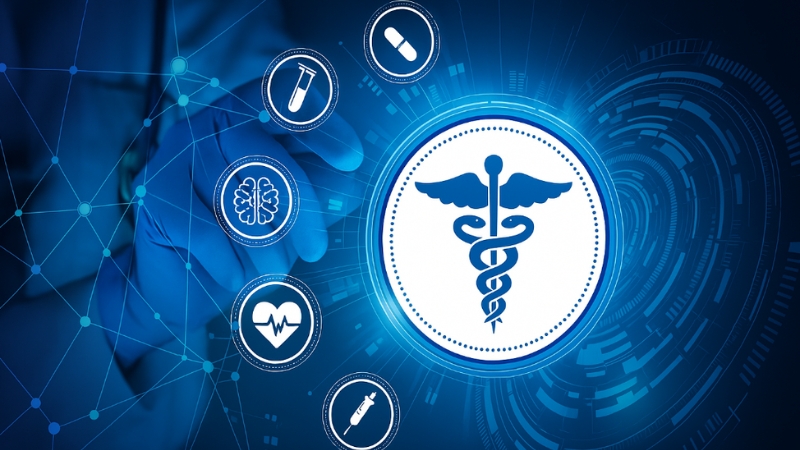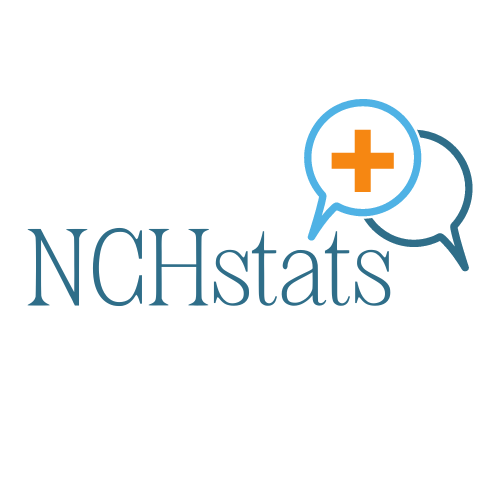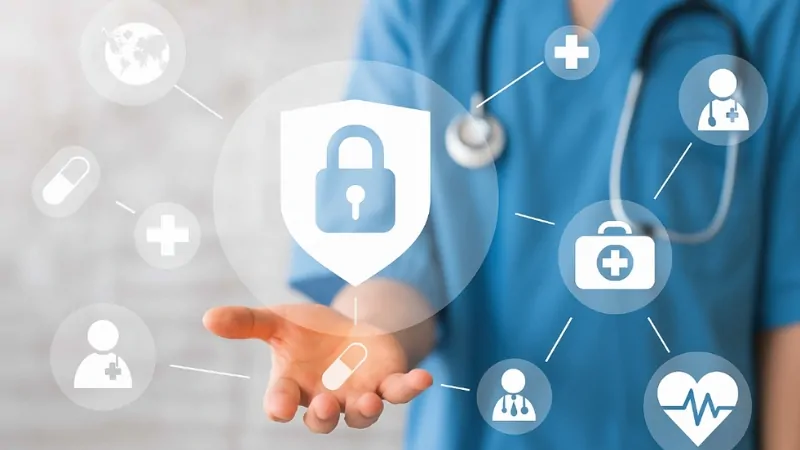In 2025, the question isn’t whether healthcare organizations are facing cybersecurity threats—it’s how well they’re prepared to stop them.
The digitization of patient records has brought unparalleled convenience to care delivery, but it’s also exposed the healthcare sector to unprecedented levels of cyber risk.
According to the HIPAA Journal and industry analysts, 92% of healthcare organizations experienced at least one cyberattack in 2024. These attacks don’t just leak data—they disrupt critical care services, delay treatments, increase mortality, and erode patient trust.
Table of Contents
ToggleThe Current State of Cybersecurity in Healthcare
Cyberattacks on healthcare organizations are not just increasing—they are becoming more dangerous and costly.
Cybersecurity in Healthcare: 2024 Highlights
Data
Organizations reporting at least one cyberattack
92%
Growth in ransomware attacks since 2015
300%
Average cost per healthcare data breach
$9.77 million
Organizations reporting increased mortality after attack
20%+
Systems compromised in a typical breach
60%
Breaches due to insider threats
57%
According to the HIPAA journal, healthcare is now one of the most targeted industries globally. Nearly every provider experienced at least one breach in 2024.
Attacks are becoming more sophisticated, with ransomware operations increasing 300% since 2015. Alarmingly, the consequences go beyond finances—over one in five healthcare organizations reported that cyberattacks negatively affected patient mortality.
Evolving Legal and Regulatory Landscape: 2025 and Beyond
In response to escalating threats, regulators have introduced a wave of cybersecurity mandates. These are reshaping how healthcare organizations manage and secure data.
New York’s Healthcare Cybersecurity Mandate
Provision
Requirement
Multi-Factor Authentication
Mandatory for system access
Incident Reporting
Within 72 hours of a breach
CISO Role
Required for all hospitals
Risk Assessments
Annual, mandatory
This mandate reflects a broader shift toward enforced cybersecurity at the state level. New York’s regulations are likely to influence nationwide standards.
Requiring organizations to appoint CISOs and perform annual risk assessments pushes cybersecurity from IT into executive strategy.
Proposed Federal Law: HISAA (Health Infrastructure Security and Accountability Act)
Focus Area
Requirement
MFA & Encryption
Mandatory across systems
Compliance Goals
Enhanced enforcement
Cyber Hygiene
Standardized best practices
HISAA aims to establish national consistency in cybersecurity performance according to government sources.
It pushes healthcare organizations to meet elevated digital security standards and ensures that both large hospital systems and small clinics follow a baseline of protections.
CISA Guidance for Healthcare IAM
IAM Focus Area
CISA Recommendation
Identity Verification
Use phishing-resistant MFA
Access Management
Apply the least privilege and routine audits
Role-Based Permissions
Limit access to necessary users only
CISA emphasizes digital identity as a foundational pillar of defense. Healthcare institutions are being urged to implement IAM frameworks that control, monitor, and protect access to systems and data using role-based permissions and adaptive authentication.
Our Mitigation Guide offers best practices to combat cyber threats affecting the Healthcare and Public Health. If you’re at #HIMSS24, head over to booth 1101 or our Government Connection Plaza kiosk to learn more. https://t.co/wSdtgllfD0 pic.twitter.com/0gmMOWgDxH
— Cybersecurity and Infrastructure Security Agency (@CISAgov) March 10, 2024
PHI vs. General Patient Information: What Must Be Protected?
Understanding what qualifies as Protected Health Information (PHI) is critical to ensuring compliance with HIPAA and similar regulations.
Example
PHI?
Reason
“Mr. Jones has a broken leg”
Yes
Identifies patient + health condition
Mr. Jones’ phone number in his record
Yes
Connected to PHI in a designated record set
Same phone number in a separate contact list
No
Not linked to medical information
According to HIPAA, not all patient information is PHI. Only data stored or transmitted in relation to a patient’s health, care, or payment—when it also identifies the individual—is protected.
However, when non-health data (like contact info) is stored in a designated record set with PHI, it becomes PHI and inherits the same protections.
Organizations frequently consult frameworks and resources from specialized firms such as USDM, which provide guidance on aligning IT infrastructure with healthcare compliance standards.
These references can help clarify expectations under HIPAA, HITECH, and evolving state and federal regulations, especially for teams managing sensitive data in cloud or hybrid environments.
Securing PHI: Practical Measures for 2025

The following defense-in-depth strategy addresses both technical and operational risks:
Security Measure
Purpose
Firewalls & IDS
Block and detect intrusions
Spam/Web Filters
Prevent malicious email and websites
Antivirus & Patch Management
Detect and prevent malware infections
Data Encryption
Secure data at rest and in transit
Secure Email & Portals
HIPAA-compliant communications
Role-Based Access
Restrict PHI access by job role
Regular Audits
Identify misuse or breach attempts
Backups & Disaster Recovery
Ensure data can be restored
Mobile Device Security
Remote wipe and encryption
Employee Training
Raise awareness and reduce human error
These controls address all key vectors through which PHI can be compromised: email, web traffic, devices, and human behavior. Organizations that implement these safeguards are far better equipped to prevent, detect, and respond to cyber threats.
The Critical Role of Digital Identity (IAM) in Healthcare Security

Here’s how modern digital identity platforms are transforming the healthcare cybersecurity landscape:
IAM Benefits for Security and Operations
Capability
Benefit
MFA & Passwordless Access
Prevents credential theft
Single Sign-On (SSO)
Streamlines clinician workflows
Role-Based Access
Ensures only necessary access to PHI
Biometric & Token-Based Auth
Removes weak passwords
AI-Driven Behavior Analytics
Detects anomalies in real time
Digital identity management is key to blocking unauthorized access, simplifying user authentication, and ensuring systems are resilient even under attack.
By minimizing access to only what’s necessary and requiring multiple forms of verification, IAM mitigates both internal and external threats.
Trust, Transparency, and the Patient Relationship
Research shows that patients are more open and cooperative when they trust their data is safe.
Benefits of Informing Patients About Data Security
Action
Outcome
Include PHI protection info in privacy notices
Builds trust
Highlight the use of secure portals and apps
Improves transparency
Demonstrate adherence to HIPAA and state laws
Enhances credibility
Trust is a powerful tool in healthcare. When patients feel their data is secure, they are more likely to share personal details, which enables better diagnosis and care outcomes.
Conclusion
@rubin_allergy There has been a massive cyberattack on the healthcare industry that has been ongoing. Change Healthcare announced the attack on February 21 and problems are still occurring. Healthcare providers may he losing up to $100 million a day due to this cyber attack. #healthcare #tiktokdoc #learnontiktok ♬ Mysterious and sad BGM(1120058) – S and N
The data is clear: cyberattacks on healthcare are more frequent, more damaging, and more dangerous than ever before. With 92% of organizations experiencing breaches, average costs nearing $10 million per incident, and patient safety now directly at risk, the healthcare industry can no longer afford to treat cybersecurity as a back-office function.
As the quality of healthcare in the US continues to evolve, the need for robust digital security becomes even more critical to protect sensitive patient information and ensure trust in the system.
Regulatory frameworks like New York’s Cybersecurity Mandate and the proposed HISAA legislation are setting the tone for the future—one where compliance, accountability, and proactive risk management are non-negotiable. But compliance alone isn’t enough.
The true cornerstone of healthcare security in 2025 is digital identity. IAM systems that integrate MFA, role-based access, biometric logins, and real-time behavior monitoring aren’t just helpful—they are essential. They protect against insider threats, enforce Zero Trust principles, and create a resilient foundation for secure, patient-centered care.
Related Posts:
- Are We Doing Enough to Support Cardiac Arrest Survivors?
- RPM by the Numbers - Market Growth, Adoption Rates,…
- 5 States With the Highest and 5 Lowest Healthcare…
- 10 Latest Breakthroughs in Medical & Test Equipment…
- Top 10 Healthcare Careers in Demand for 2025 -…
- The Quality of Healthcare in The US Has Hit a…








